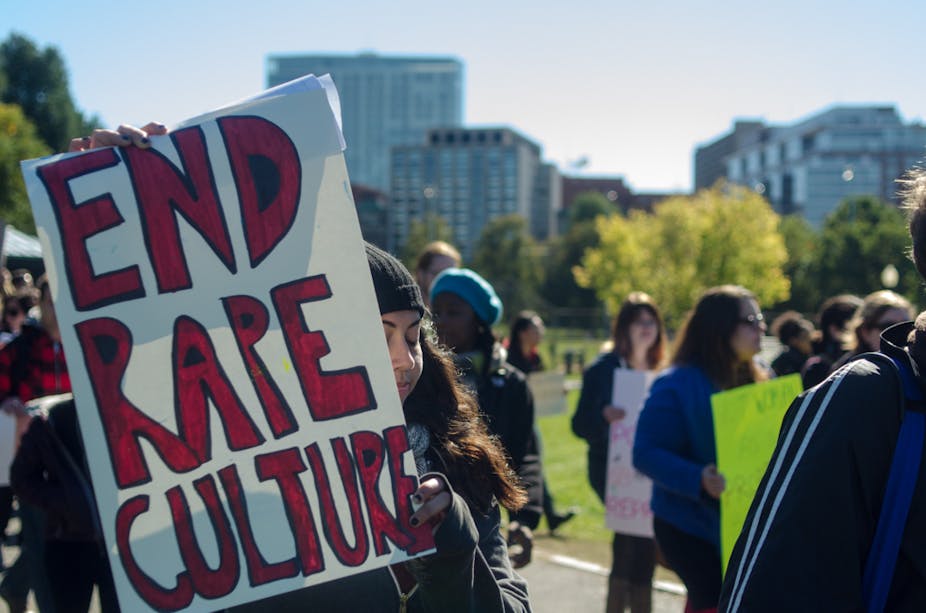Hidden amongst the more high-profile reforms in the newly published Criminal Justice and Courts Bill 2014 is a proposal to extend the law on extreme pornography. This law, first enacted in 2008, criminalises the possession of pornographic images which are grossly offensive, disgusting or otherwise obscene and which explicitly and realistically depict bestiality, necrophilia or violence that is life-threatening or likely to result in serious injury.
The law specifically did not include pornographic images of rape, a gap in the law which the Scottish Government closed with its own extreme pornography law in 2010.
In the summer of 2013, a successful campaign to ban rape porn was launched by Rape Crisis South London and the End Violence Against Women Coalition. We supported this campaign, as did 72,000 other people who signed an online petition – and David Cameron, who swiftly came on board with a promise to extend the extreme pornography law to include images of rape. Such pornography, he said,:
Can only be described as extreme; I am talking particularly about pornography that is violent and that depicts simulated rape. These images normalise sexual violence against women and they’re quite simply poisonous to the young people who see them.
And so to February 2014 and section 16 of the new Criminal Justice and Courts Bill. This does exactly what the prime minister said it would – and more. It will not only criminalise the possession of pornographic images of rape, but also sanction those images depicting other forms of non-consensual sexual penetration.
This reform rightly addresses the failure of the current law to take a strong stance against the normalisation of sexual violence. Rape pornography eroticises violence. It sustains a culture in which a “no” to sexual activity is not taken seriously, in which sexual violence is seen as entertainment and in which equality and dignity are not protected. A culture in which, as research for the Children’s Commissioner suggests, young people turn to pornography for guidance on sex, engage in risky behaviour, are uncertain as to what consent means and develop harmful attitudes towards women and girls. Rape pornography is a form of cultural harm – and this cultural harm justifies legislative action.
Serious about harm
This is not to suggest that those who view rape pornography will necessarily go on to commit rape. Arguments for such a direct causal link between pornography and violence are simplistic. Nor does our endorsement of these changes extend uncritically to the entirety of the extreme pornography laws and the proposed reforms. Further amendments are crucial to ensure the effectiveness of the new law, and to guarantee that it targets culturally harmful material.
First, we recommend the inclusion of a provision requiring reference to be made to the context (description, sounds, narrative) of the image when determining whether or not it is an image of “rape”. Scottish law already includes such provisions, which help make it clearer which images fall within the legislation’s remit.
We also recommend extending the defence of “participation in consensual acts”. This would further clarify that the target of the legislation is not –- and should not be –- private depictions of consensual BDSM activity. As we have argued elsewhere, the law currently allows for the criminalisation of many images which, when carried out with consent and produced for private use, should not be covered by this law. Extending the defence to ensure such images would not be captured by it would remedy this flaw in the current offence.
Finally, the law should include a public good defence, as in the Obscene Publications Act 1959, as this would alleviate concerns that the extreme pornography provisions extend to works of art.
In the end, however, while we welcome and support the government’s recognition that rape pornography is “extreme” enough to be included in the extreme pornography law, we hope that these measures are just the beginning. If we truly want to address the harms of pornography, what we need is a wholesale review and revision of the obscenity and pornography laws.
This would include a reform of the Obscene Publications Act 1959, and a reworking of its focus on the “depravity” of the consumer of obscene materials. It would entail an examination of the prosecutorial policy which continues to label as “obscene” material that may be distasteful for some, but which is not unlawful to perform. It would require ensuring that the law is up-to-date for our technological age, particularly around the difficult questions of what “possession” actually means, as well as the implications of increasingly realistic computer generated images.
It is time for a new Commission on Pornography and Obscenity, 30 years on from the Williams Report at the end of the 1970s. It is time for a new law which places the cultural harms of pornography at its centre.

